#sāmoa
Text
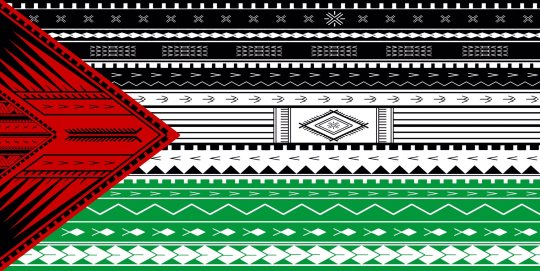
Palestine flag with Samoan motifs & patterns representing unity & solidarity designed by Samoan-kiwi great artist Michel Mulipola (@bloodysamoan) whose great-grandfather was part of Samoan independence Mau movement (Sāmoa for Sāmoans).


13K notes
·
View notes
Text

Auntie is canonically Samoan! What she's saying here is "Sole!" which roughly means bro, man, dude, etc. Love how Frenchie doesn't really react but Fang's response is basically "yes, what?"
Thanks to all the guys who shouted sole at each other all the time at my high school, making this one of the few Samoan words I can recognize immediately.
Edit: since I explained this badly, Fang isn't responding in Samoan, he's just saying "oh, hm?" which is more of an acknowledgement noise than actual words in any language.
2K notes
·
View notes
Text
any nesians have any resources on their motu if they're willing to share? specifically i was trying to learn about kūki 'āirani māori history since we have so much shared history together and i found like. a single paragraph about the rough (white) estimate of when rarotonga was settled, followed by an entire essay on the post european contact history lmao.
#polynesia#māori#pasifika#cook islands#i was trying to find stuff about sāmoa/tonga/tahiti as well to absolutely no avail
3 notes
·
View notes
Photo

On this day, 19 January 2018, Sāmoan Fa'afafine activist So’oalo To’oto’oali’i Roger Stanley died. Fa'afafine is an umbrella term for people assigned male at birth who identify in a range of ways from trans women, to third gender to non-binary to some gay men. Roger Stanley co-founded and was president of the Sāmoa Fa'afafine Association (SFA), advocating for Fa'afafine and LGBT+ rights, and established Fa'afafine beauty pageants in order to raise money to fund community services, despite transgender dress being illegal at the time, although it was later decriminalised. She and the SFA also campaigned for rights for fa’atamaloa (lesbian or assigned female at birth but with stereotypically "masculine" qualities) and fa’afatama (trans man) people. https://www.facebook.com/workingclasshistory/photos/a.1819457841572691/2190147774503694/?type=3
296 notes
·
View notes
Text
Please reblog for a bigger sample size!
If you have any fun fact about Samoa, please tell us and I'll reblog it!
Be respectful in your comments. You can criticize a government without offending its people.
29 notes
·
View notes
Note
Aaa! It's so rare to see Pacific Islander ROs I'm so happy you created Kai✨
What inspired you to make their heritage that way? And will it be explored?
AAA Thank!
Last year I did my thesis on Postcolonial Ecofeminist Literature in the South Pacific and I feel like that has really moved and changed me^^
There are so little references to Oceania in media I knew I wanted to use some of my knowledge to create a character from the Pacific😭 Kai was originally going to be either Maori, Samoan or Hawaiian (the three areas I investigated).
I feel like Samoan societal ideals (such as Faʻa Sāmoa, the Samoan way) are really interesting when analysing Kai^^
For anyone interested I plan on doing my Master's thesis on the Representation of Female Neurosis in Media🏃♀️
#as a reference i mostly analysed Where We Once Belonged by Sia Figiel and I LOVED that book sm#Izzy nerd moments pls dont ask i will ramble if you hate rambles dont as pls#im a bit of a nerd🥺#ask#kai alofa#dropout#dropout if#personal#rambles
15 notes
·
View notes
Note
feel free not to answer this if it's tokenizing or if you just dont want to ofc but i just wanted to know your perspective since you've posted on the issue, is it possible to view the state of israel as a reactionary colonial entity (which i think qualifies as anti-zionism unless i'm misusing the word?; barring the very existing issue of the people who disguise their antisemitism as antizionism) without being antisemitic or do you feel that it's inherently problematic
This seems like a good faith question, so I'm not going to give you my normal answer of "lmao."
Not sure if tokenizing is the word you're looking for, it would be if you were asking me to speak on behalf of all Jews, which I don't think you are. I'm not going to do that, obviously, just speaking on my own behalf as some random with a blog who's not Israeli and whose knowledge of Israel is pretty limited. Yes, you're misusing the word anti-Zionism. I'm honestly of the opinion that goyim should just banish the words Zionism and anti-Zionism from their vocabulary and so should most Jews with the possible exception of historians and other academics who've actually read the pretty extensive literature on the subject. The question of Zionism was pretty firmly resolved in the 1940s with a yes. State of Israel exists, now what we have to do is figure out where to go from there. You're better served by being more specific.
As for the actual question? I'm going to be annoying and say you need to be more specific again. Define Israel, define reactionary. and define colonial entity. (I'd honestly banish the word "entity" from most conversations relating to Israel too, since "the Zionist entity" is something nazis say.) Hell, define colonial too. If it's a colony, what's it a colony of? I think you could say that there are Israelis who are using the tactics of settler colonialism on the West Bank (setting up homesteads, fucking with the people who live there and provoking attacks that require the IDF to come and protect them from the consequences of their actions). At least, that's the impression I've gotten from what I've read/heard people talk about, but I haven't actually read much of the literature about what settler colonialism is.
I think the current government is definitely far right, and a lot of the population is in support of reactionary policies, but that's far from unique to Israel. Would you call Serbia a reactionary colonial entity because of the Republic of Srpska or because of Kosovo? Russia, because of Ukraine? America, because of the everything (especially Hawai'i, Puerto Rico, Sāmoa, Virgin Islands, Guam, Mariana Islands, etc)? None of these are very good comparisons because all of these situations are unique, but it's worth considering. If you'd agree on calling any/all of those things "reactionary colonial entities," then what's the point of describing Israel that way? Why not be more specific in what you're talking about? What does using that descriptor communicate and how does it further the cause of peace and justice? Who did you first hear it from and what were their motives? Is it possible? Sure, maybe. But a better question might be "is it useful to understand it this way?"
And just again, I'm a random Jewish American blogger. I've got an interest in history and we do plan on going to grad school for genocide studies eventually, but right now, we're an arts major with a concentration in comics. Most of my knowledge comes third hand at best. That being said, from what I've seen of it, I really like the work that the organizations Standing Together (https://www.standing-together.org/en) and the Parents Circle (https://www.theparentscircle.org/en/pcff-home-page-en/), as well as other groups promoted by Middle East Peace Alliance, (https://www.allmep.org/) have been doing.
I actually really appreciate that you asked it like this and not just demanding to know my labels. This doesn't feel harassing at all.
#i/p#please do not jump down my ass people in the tags i'm only using that for people who have it blacklisted don't have to see it
6 notes
·
View notes
Note
you’re so cute with ur deli. i would love a cured salami on white with gravy 🫶🏻 maybe some domestic fluff? i don’t have anything specific in mind :-) i’m so happy you’re back to writing!!!
ahh thank you babes! 🥰 i'm glad to be back too. we all know ryan is the love of my life so i very much appreciate this
welcome to c's deli :))

“Those don’t go there!”
Your voice is airy and exasperated when you scold your husband, exhausted from the long haul flight from Melbourne. Ryan is much more used to traveling than you, and it’s glaringly obvious as he struts around in the faded green light of the stove clock trying to find homes for the knick-knacks purchased on your honeymoon.
He smiles coyly, knowing they don’t actually have a place because they’ve never set foot in the house before, but lets you boss him around a little. “Alright sweetheart,” Ryan chuckles quietly, “Where do they go?”
A quiet fills the large space as you contemplate, thinking of where each would look best. “The magnets obviously go on the fridge,” you murmur, “And the koala stuffie fits perfectly on the shelf beside the lamp. Everything else has a place too, but I’m too tired to remember them right now.”
“When did you think this all up?”
You open your mouth to respond, but a yawn sneaks out instead. You know your prior tones have been too harsh due to your exhaustion and adjust accordingly, wanting him to know you aren’t actually upset. “Somewhere between Sāmoa and Hawai’i when you were snoring,” you eventually get out, poking his chest lightly with your index finger.
Getting so close proved to be a fatal mistake, and Ryan wraps his arms around you tightly. It’s clear he has no intention of letting you go, and a barrage of kisses is placed on your neck as your giggles bounce off the cabinets. The pair of you stay conjoined and waddle through the house, bags the pair of you had been hellbent on putting away long forgotten in the foyer. Sleep has taken control of your brain, fogged your every thought, and all you want to do is curl up next to Ryan and sleep the jetlag off for the next seventy-two hours.
Once back in the familiar space of your shared bedroom, with its lush green bedspread and posh gold accents courtesy of Ryan’s interior decorator sister, you allow exhaustion to take over completely. There’s no attempt made to change your clothes as you faceplant directly into the mattress. You don’t resist, however, when Ryan delicately peels items from your body and replaces them with clean undergarments before tucking the covers around your waist. He joins shortly after, stripped to his boxers and left hand empty, the ring he wears so proudly beside yours in the jewelry box.
“You’re my husband,” you whisper, completely delirious from the time change and still in awe that someone like Ryan wanted to be with you forever.
He smiles, though it doesn’t reach his eyes completely out because he’s fading too, and tucks a loose piece of hair back into place. “I am. Forever and always.”
“Forever and always,” you repeat, leaning forward enough to place your lips against his. It’s barely a kiss, more so a resting pose, but it works and the two of you entwine impossibly more together, still so wrapped up in newlywed bless and beyond head over heels for each other.

place your order here x
#ryan graves blurb#ryan graves imagine#ryan graves x reader#ryan graves fic#new jersey devils blurb#new jersey devils imagine#new jersey devils fic#nhl blurb#nhl imagine#nhl fic#hockey blurb#hockey imagine#hockey fic#c's deli!#cwrites
92 notes
·
View notes
Photo

Samoan Girl. From the album: Views in the Pacific Islands, 1886, Sāmoa, by Thomas Andrew. Te Papa (O.037942)
64 notes
·
View notes
Text
Thinking about LGBTQIA+ headcanons
Specifically in regards to POC characters.
Warning for implied racism.
It’s just so interesting and though can be done in poor taste—sometimes unintentionally (think Encanto fandom), it can bring a lot of interesting aspects to the character.
In a lot of Indigenous cultures, they are more than two genders that date back pre colonization.
Some examples are Hawai’i has māhū, Sāmoa has fa’fafine, and more!
What brought this one was talking to others about the West twins possibly being nonbinary, but there are other examples in fandom.
I want to be careful and not push harmful stereotypes (think calling cis women of color “men” or other things)
What’s your favorite POC LGBTQIA+ headcanons?
0 notes
Text

Book of the Day, November 23rd — Historical Fiction, Rated 5/5 stars
Temporarily FREE on Kindle! Get your copy below:
https://forums.onlinebookclub.org/shelves/book.php?id=617138
Heather: Tuu Maia Lou Lima (Give Me Your Hand) by Steven A. Yagyagan
This book received a PERFECT 5-star rating from an Official Onlinebookclub.org Reviewer and has 5 five-star ratings on Amazon!
This is a true, heart-wrenching, and yet heartwarming story of a toddler’s survival that continued throughout most of her life. Follow her journey from Sāmoa to Kaua’i, O’ahu to San Francisco, and other parts of the continental U.S.
"I highly recommend this book, which is a testament of hope for those who may have known of abuse and for those who survived." ~ Amazon Reviewer
#fiction #freebooks #bookswithperfect5starratingsfromobc
1 note
·
View note
Text
Samoan culture is based on Faʻa Sāmoa, the 'Samoan Way'.
It includes the behavior and the responsibilities that spell out all Samoans' relationships to one another and to persons holding positions of authority.
Faʻa Sāmoa includes the way one stands, walks and speaks, for example by saying "tulou" when one walks in front of someone who is seated. Likewise, it is extremely disrespectful to eat or drink when walking through a village.
"Family" in samoan is ʻAiga.
'Aiga consists of a wider family group of blood and marriage or even adopted connections who all acknowledge the matai (head of the family) who can be either male or female.
All members of the 'Aiga don't have to live under the same roof or even in the same village but it will assemble when the occasion requires it, generally at the residence of the matai, to discuss family affairs, deaths or weddings.
0 notes
Text
Long distance voyaging among the Pacific Islands
In order to better understand the relationship between these Polynesian societies of the western Pacific, Melanesia and Micronesia — often referred to as “Polynesian Outliers” — a multidisciplinary team of researchers analysed the geochemical signature of stone artefacts collected in Vanuatu, the Solomon Islands and the Caroline Islands between 1978 and 2019. An international research team, led by the Centre National de la Recherche Scientifique, was able to identify the geological origin of these artefacts after comparing their geochemical and isotopic compositions with reference datasets of natural rocks and archaeological quarries in the region.
The connection to the Polynesian homeland
Adzes are versatile cutting tools comparable to axes. Among the eight adzes or adze fragments the researchers analysed, six were sourced to the same large fortified quarry complex of Tatagamatau on Tutuila Island (American Sāmoa), which is located more than 2,500 kilometres away in the Polynesian homeland. “Tatagamatau adzes were among the most disseminated items across West and East Polynesia, and the sourcing of Taumako and Emae adzes suggest bursts of long-distance mobility towards the Outliers similar to those that led to the settlement of East Polynesia,” says lead author Aymeric Hermann, researcher at Centre National de la Recherche Scientifique and associate researcher at the Department of Linguistic and Cultural Evolution at the Max Planck Institute for Evolutionary Anthropology. Hermann points out that the transportation of such socially valued items — often passed down for generations among Polynesian chiefly families — suggests carefully planned voyages, rather than accidental landfalls.
The geochemical investigation of stone artefacts from the Polynesian Outliers also provides critical information on inter-island transfers between the Polynesians and their neighbours in the western Pacific, specifically between the Banks Islands and Central Vanuatu, and between the Bismarck and the Caroline Islands. The team highlights that such inter-island contacts are signals that Polynesian sailors might have played an important role in the reappraisal of long-distance mobility and in the distribution of specific material culture items and technologies such as shell adzes, back-strap loom, and obsidian points among the mosaic of Pacific Island societies in the western Pacific during the last millennium A.D. “A recent study describes an obsidian stemmed point as a chiefly heirloom found on Kapingamarangi Island with a geochemical signature matching an obsidian source on Lou Island in the Admiralties: this is an exciting find that echoes our identification of a basalt flake from mainland New Britain on that same atoll,” adds Hermann.
Long-distance mobility in the past
In the Pacific region, geochemical sourcing has been particularly successful at locating sources of stone artefacts and tracing the transport of specific items across distant islands and archipelagos. Such material evidence of long-distance inter-island voyaging shows that Pacific Island societies were never completely isolated from one another. These patterns of interaction are central to our understanding of the deeply intertwined history of cultural systems in the Pacific.
In this study, atomic emission spectroscopy and mass spectrometry were used to measure concentration of oxides, trace elements and ratios of radiogenic isotopes in order to identify geological provenances with a high level of accuracy. Thanks to the collaboration of experts in archaeology, geochemistry and data science, a cutting-edge approach to geochemical sourcing was developed, which involves the use of computer-assisted comparisons with open-access databases.
0 notes
Video
youtube
TAMA'ITA'I The Academy of Siva Sāmoa 2022 Graduation ELITE performance
0 notes
Text
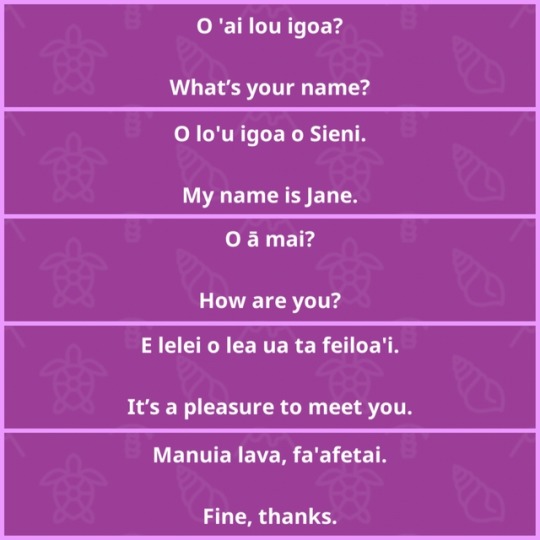

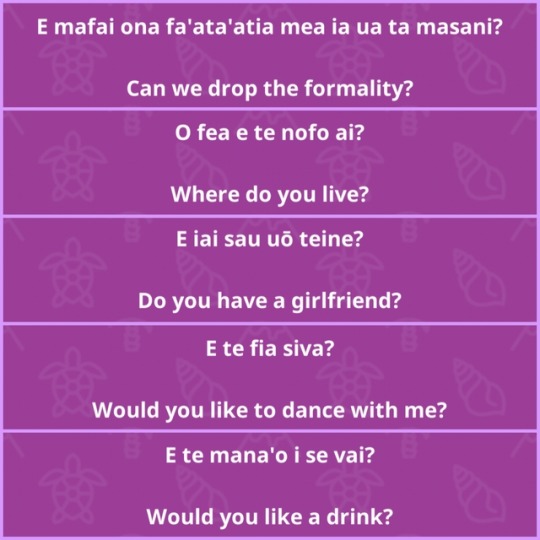

Sāmoan social phrases!
21 notes
·
View notes
Photo


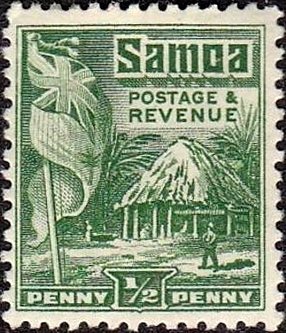



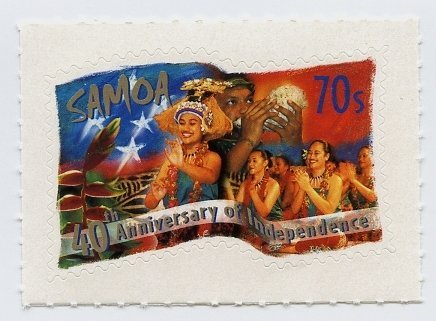

Samoa has the distinction of being the first formerly colonized nation in the Pacific to gain independence - in 1962 from the British/New Zealand. Prior to that, it had been under German control there for a while, with the UK and USA bickering about who gets what for a time before that [thus: American Samoa]. After independence, as Western Samoa, the Samoans decided to drop the “Western” in the late 1990s (to great outrage on their American Samoan neighbors’ part, who took umbrage at the apparent attempt to claim true Samoanness).
Stamp details:
Top left:
Issued in: 1877
From: Apia, Kingdom of Samoa
MC #1
Top right:
Issued on: December 10, 1900
From: Apia, German Samoa
MC #7
Second row left:
Issued on: December 23, 1921
From: Apia, Western Samoa Trust Territory
MC #56
Second row right:
Issued in: 1947
From: Apia, Western Samoa Trust Territory
MC #89
Third row:
Issued on: July 2, 1962
From: Apia, Western Samoa
MC #116, 120
Bottom left:
Issued on: June 1, 2002
From: Apia, Independent State of Samoa
MC #941
Bottom right:
Issued on: November 16, 2015
From: Apia, Independent State of Samoa
MC #BL102
Recognized as a sovereign state by the UN: Yes (since December 15, 1976)
Official name: Independent State of Samoa; Malo Saʻoloto Tutoʻatasi o Sāmoa
Member of the Universal Postal Union: Yes (since August 9, 1989)
#Sāmoa#Western Samoa#Malo Saʻoloto Tutoʻatasi o Sāmoa#Independent State of Samoa#Samoa#German Samoa#Western Samoa Trust Territory#Deutsch-Samoa#stamps#philately#august 3
9 notes
·
View notes